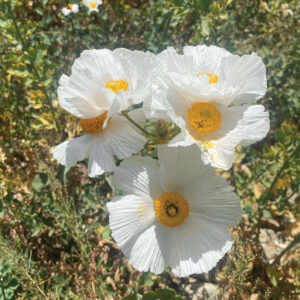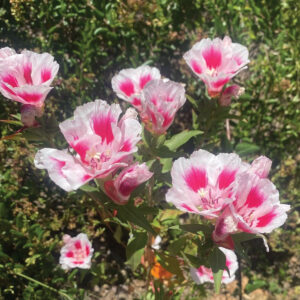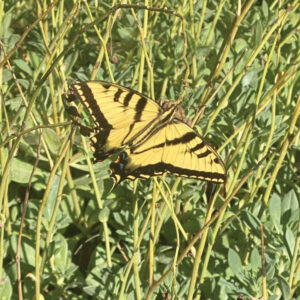Wisteria is a beautiful deciduous twining vine with beautiful fluffy lavender, pink or white cascading blossoms that can add to a pergola or arbor. Wisteria is quite vigorous and may grow 10 feet in one year so they could easily overwhelm the structures and plants around it. That means that if you want one, you must give it sturdy support and maintain it. You Wisteria needs at least six hours of sunlight each day to bloom and you should prune it after blooming no later than mid-summer. If you prune after that time you will likely trim off their bud as they set in the fall for the following spring season. Cut the sides shoots that come from the main stem back to six inches. If you have a non-blooming plant you should prune it after it has fully leafed out. We’ll try to deal with a non-bloomer below.
Planting a new wisteria is best done in the spring or fall and they should be spaced 10’ – 15’ apart (so that you don’t create a maintenance nightmare for yourself). Make sure that you are providing it with a full sun (or partial shade in our hot inland areas of Southern California) site with good drainage and adequate (regular) water. If your soil is in poor condition make sure to add compost to the soil that you remove while digging your hole. Your hole should be no deeper than the container you are taking the wisteria from, but 2-3 times wider. Gently remove your wisteria from it’s container and place it into the hole, fill the hole half way with your amended soil, and water it and let the soil settle. Once it has drained, fill the rest of the hole, water again and make sure that the soil has no air pockets in it. If your soil is good (who’s is?) you don’t need to add amendments.
I am asked fairly often, “Why is my wisteria not blooming?” so I ‘m going to give you a quick run down on some of the reasons that might happen and what you can do about it. Often a non-blooming plant is getting too much nitrogen, nitrogen promotes growth but not bloom, and usually the plant is too close to or in a lawn. The lawn loves that nitrogen rich fertilizer but the wisteria will spend more time growing and less time producing blooms. When the wisteria has lots of nitrogen it is not stressed so it has no reason to produce blossoms to produce seed and reproduce. Feed your wisteria with a fertilizer that has a higher middle number (phosphorus) keep that lawn fertilizer away from it and hopefully it won’t be too long before it starts to bloom. You can also let it get a little dried out, which will slow down its growth and stress it a little, it’s reaction will likely be to take care if itself by trying to reproduce (flowers, yay!)
Additional care tips – make sure to add a nice 2-3” layer of mulch under your wisteria each spring, this will help control weeds and retain moisture. You can remove the shoots that come up from the base of the plant any time that they appear. The more you keep up on your wisteria the happier you will be.
To learn more about my designs please visit my website.










